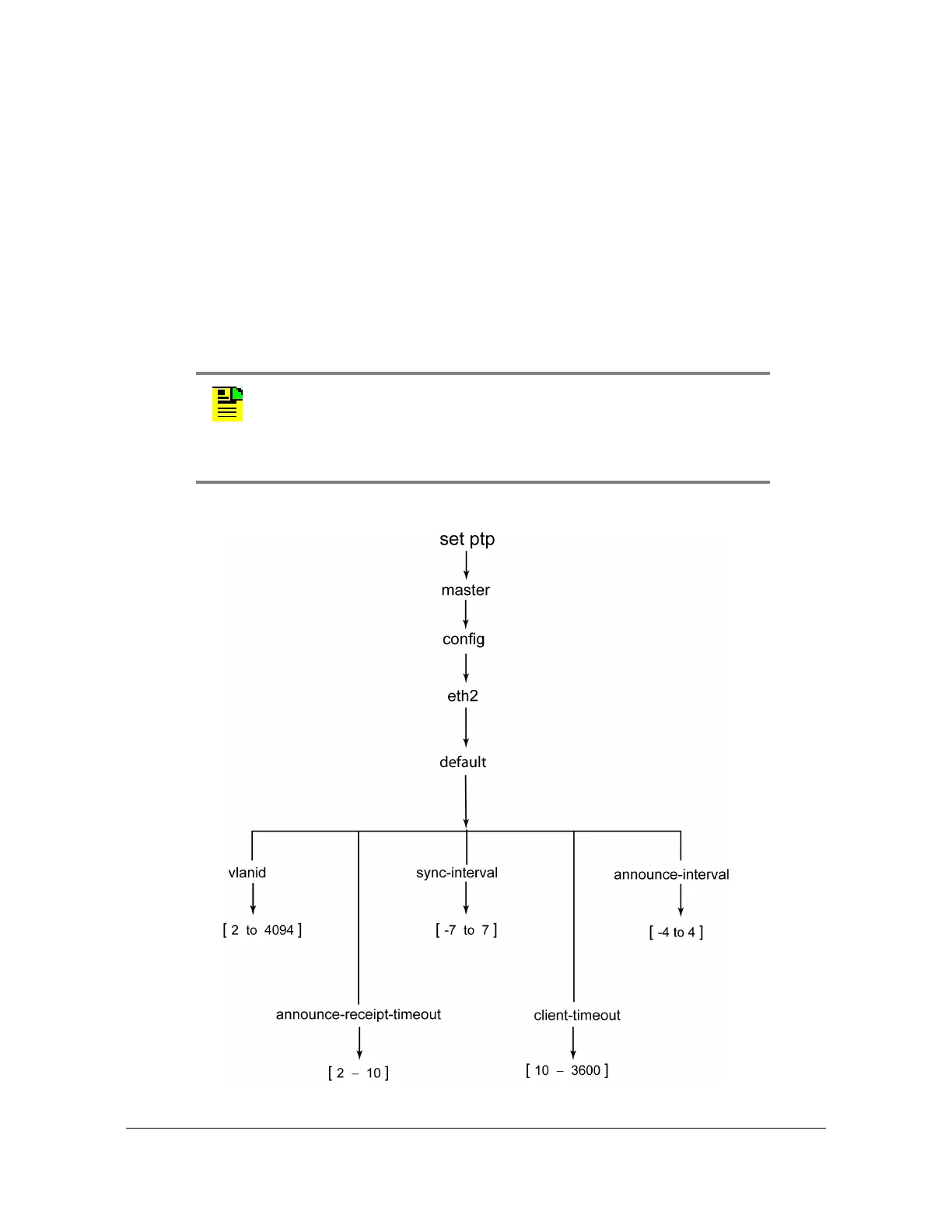098-00564-000 Revision A3 – July, 2013 TimeProvider 2300/2700 User’s Guide 215
Chapter 4 Provisioning
Provisioning the PTP Output
In multicast mode, there are no client leases or client limits. All delay requests will
be responded to. There is no limit applied to the number of delay responses
supported, other than the maximum capacity of the Ethernet link and the TP
2300/2700.
In multicast mode, the TP 2300/2700 creates a client list by examining the received
PTP delay request messages. For a client to be reliably added to the client list and
not removed, the TP 2300/2700 needs to receive several hundred delay request
messages during the client timeout period. If delay requests are sent at a slow rate,
then the client-timeout value must be increased. Since one-way PTP operation
does not use delay request and delay response messages, the client list will not be
populated in this mode.
Figure 4-17. Set PTP Master Command Hierarchy - Default Profile
Note: The TP 2300/2700 uses the clock ID as a unique identifier for
PTP clients and can only allow for one instance of the clock id to be
serviced. If a PTP client with a single clock ID requests service using
two different IP addresses or VLANs, the TP 2300/2700 will use the
IP address/VLAN of the latest request.

